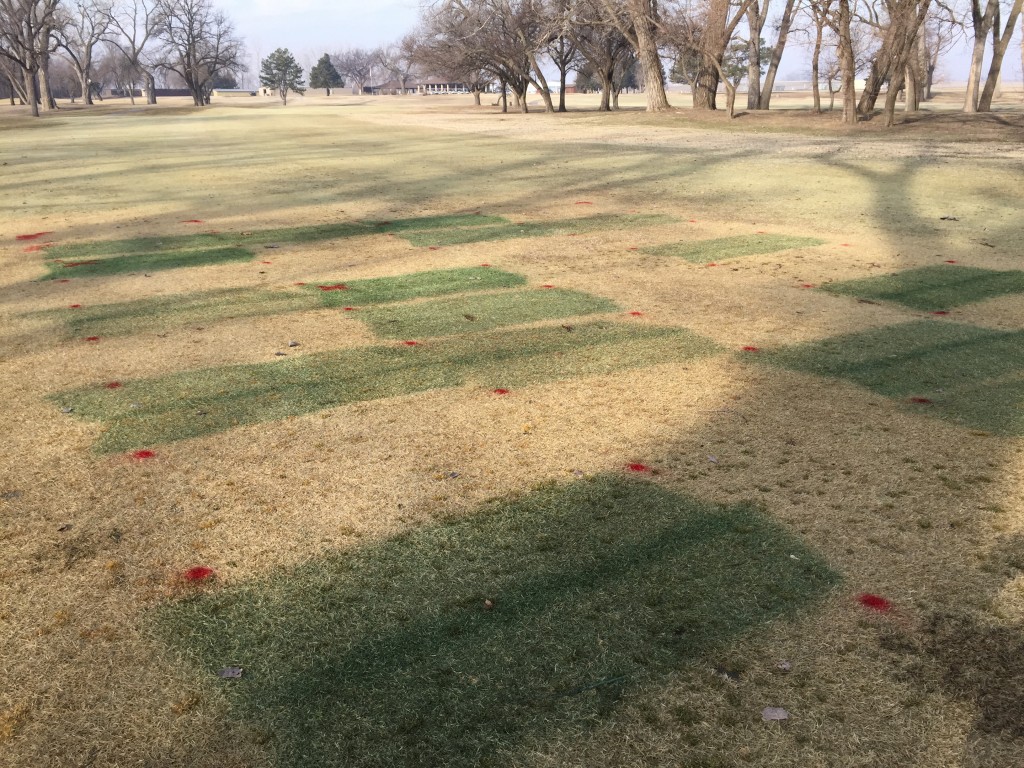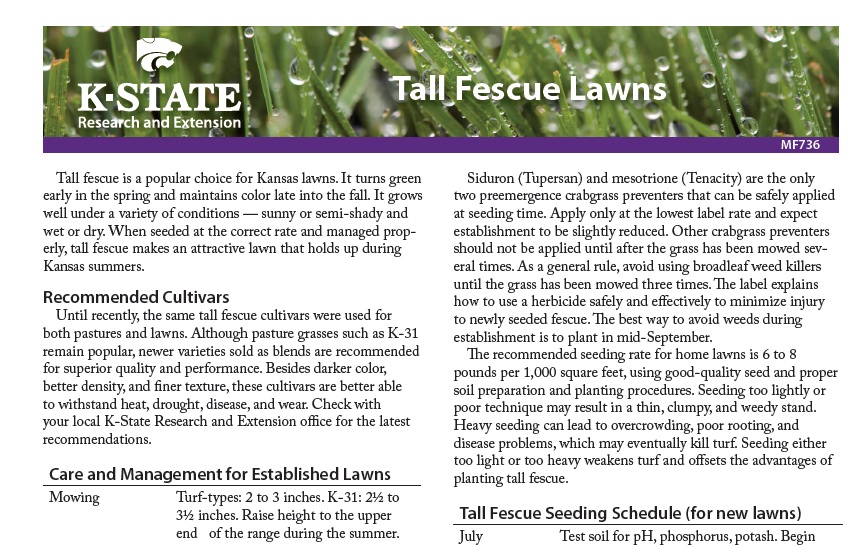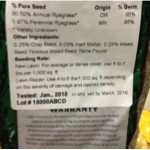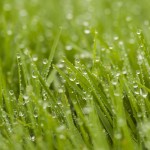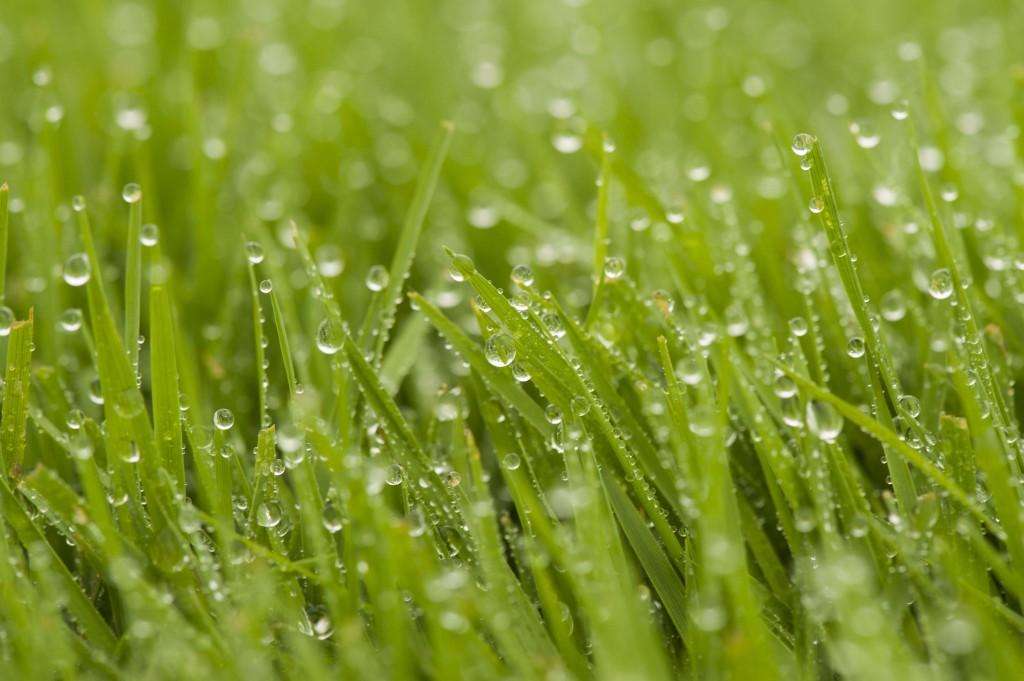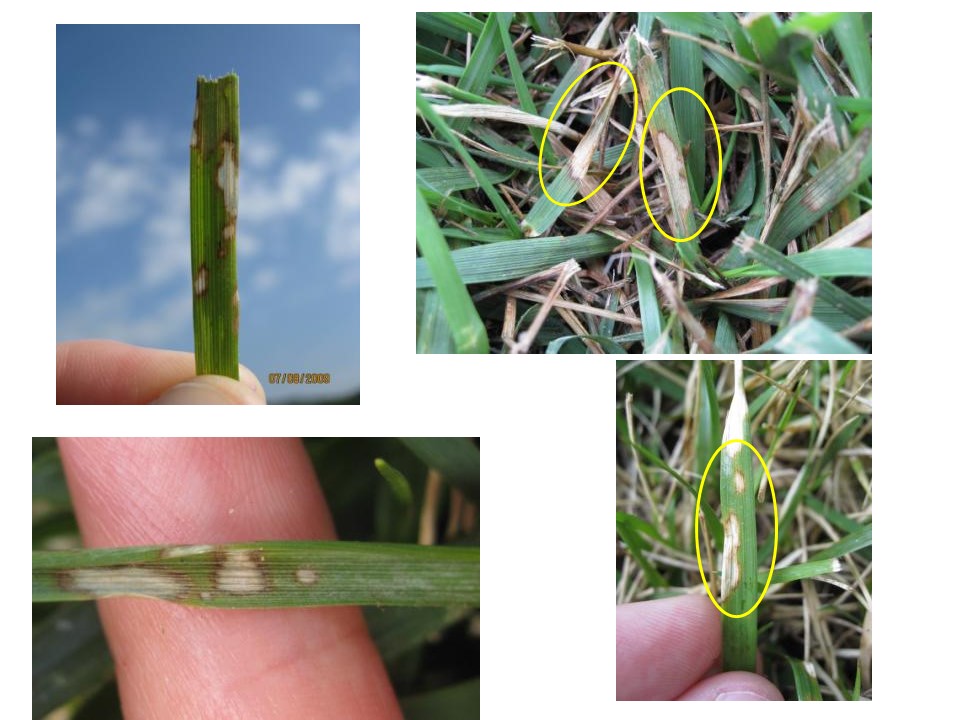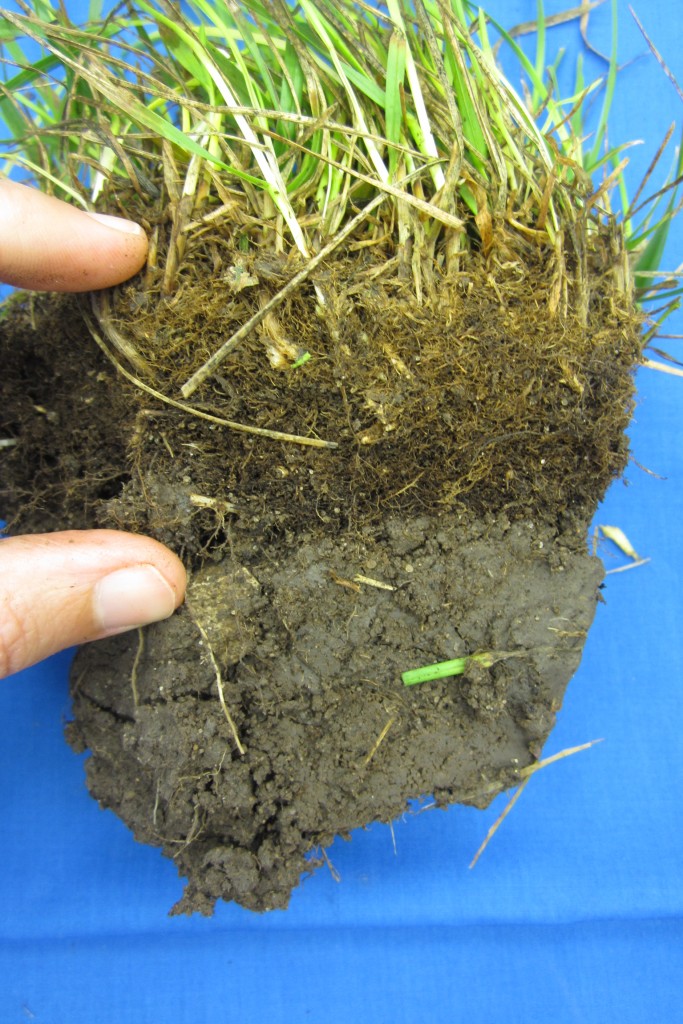(By Jared Hoyle; KSU Turfgrass Research and Extension)
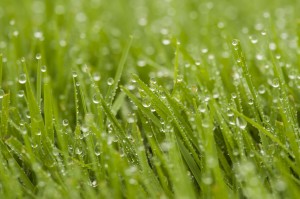 Kansas State University and The National Turfgrass Evaluation Program (NTEP) work together to determine the best adapted tall fescue cultivars for Kansas. This standardized program coordinates uniform evaluation research trials from turfgrass selections across the United States and Canada. These research trials are conducted over many years and data is recorded throughout the duration of the experiment. Recorded data includes turfgrass quality, color, texture, density, green-up, establishment, drought tolerance, winter injury and disease/insect damage. To find out more information about NTEP go to – http://www.ntep.org.
Kansas State University and The National Turfgrass Evaluation Program (NTEP) work together to determine the best adapted tall fescue cultivars for Kansas. This standardized program coordinates uniform evaluation research trials from turfgrass selections across the United States and Canada. These research trials are conducted over many years and data is recorded throughout the duration of the experiment. Recorded data includes turfgrass quality, color, texture, density, green-up, establishment, drought tolerance, winter injury and disease/insect damage. To find out more information about NTEP go to – http://www.ntep.org.
The tall fescue varieties listed below were the top preforming varieties from 2013 and 2014 data in the 2012 National Tall Fescue Test located in Wichita, KS. The list contains only varieties that are commercially available in 2015. Varieties were selected according to the mean quality ratings from April to October. Tall fescue varieties listed were not statistically different from the top performer. Turfgrass quality ratings take into account the aesthetic and functional aspects of the turf. Turfgrass quality is based on a combination of color, density, uniformity, texture, and disease or environmental stress. Other tall fescue varieties in the evaluation trial may preform well in Kansas. Any tall fescue variety with a rating of 6 or above is considered acceptable. For the complete list of tall fescue varieties and performance data go to – http://www.ntep.org.
2013 Data
- Hot Rod
- GTO
- Rhambler 2 SRP
- Michelangelo
- 4th Millennium
- Faith
- Firebird 2
- Grande 3
- Fayette
- Thor
- Maestro
- Temple
- Fesnova
- Hemi
- Black Tail
- Avenger II
- Firewall
- Technique
- Rowdy
- Reflection
- Falcon V
- Foxhound
- Leonardo
- Rockwell
- Firecracker SLS
- Dynamite LS
- Titanium 2LS
- Terrano
- Raptor III
- BIZEM
- Bullseye
- Diablo
- Screamer LS
- Saltillo
- Caesar
- Hover
- Catalyst
- Kingdom
- Frontline
2014 Data
- Thor
- Technique
- Temple
- Falcon V
- Michelangelo
- Rockwell
- Black Tail
- Avenger II
- Terrano
- Reflection
- Firebird 2
- GTO
- Meridian
- Rowdy
- Maestro
- BIZEM
- Screamer LS
- Titanium 2LS
- 4th Millennium
- Traverse 2 SRP
- Grande 3
- Leonardo
- Firecracker SLS
- Dynamite LS
- Rhambler 2 SRP
- Saltillo
- Catalyst
- Kingdom
- Hot Rod
- Swagger
- Raptor III
Names appearing in this publication are for product identification purposes only. No endorsement is intended, nor is criticism implied of similar products.
